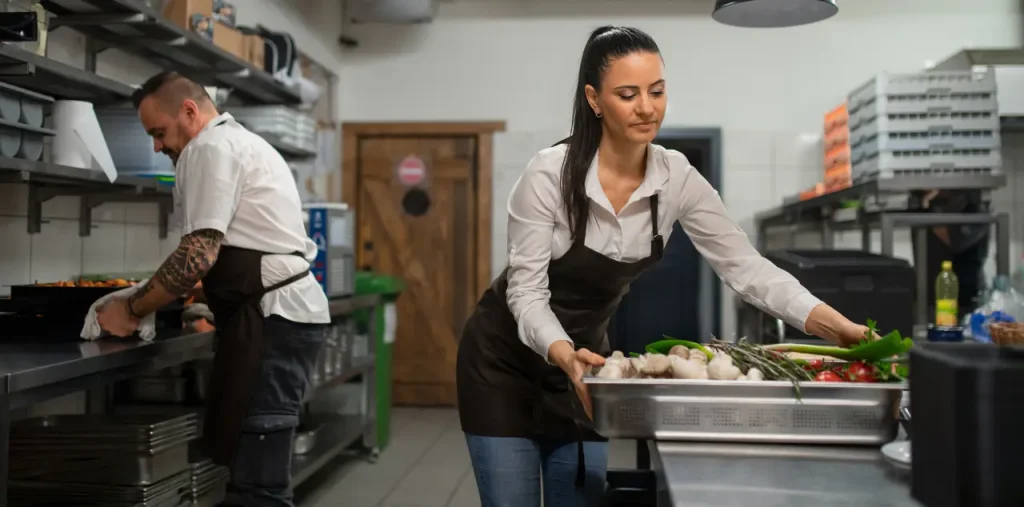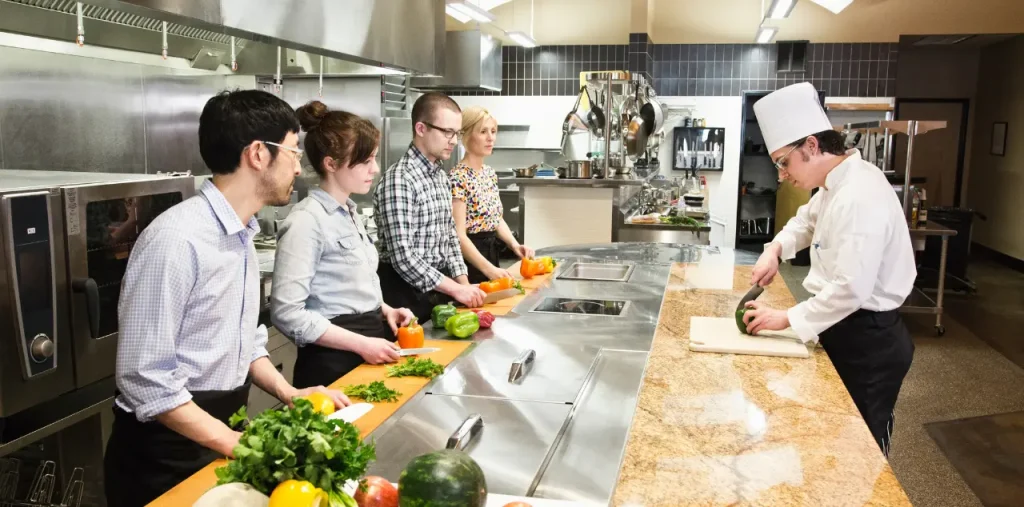Running a restaurant isn’t just about crafting delicious dishes; it’s about managing the people who make those dishes possible. Effective kitchen staff management can make or break a hospitality business. From chefs and line cooks to dishwashers and food runners, every team member plays a vital role in keeping the kitchen efficient, safe, and organized.
When your kitchen team operates smoothly, customers get their meals on time, the quality remains consistent, and your establishment gains a stellar reputation. However, if mismanagement occurs whether through poor communication, unclear roles, or low morale, things can spiral out of control fast.
Understanding the Role of Kitchen Staff
Before you can manage a team efficiently, you must understand what each role entails. The kitchen staff is a blend of talent and teamwork, where every individual contributes to the final dining experience.
Key Members of a Kitchen Team
- Head Chef: Oversees operations, menu design, and kitchen leadership.
- Sous Chef: The second-in-command who ensures smooth execution.
- Line Cook: Handles specific food stations and maintains consistency in dishes.
- Dishwasher: Keeps utensils and equipment sanitized for service.
- Food Runner: Bridges the gap between kitchen and service, ensuring meals reach guests promptly.
Each role requires unique skills, but success depends on collaboration, respect, and clear communication among all team members.
Establish Clear Roles and Responsibilities
One of the most common reasons kitchen operations fail is confusion over duties. Every staff member should know their exact role and daily expectations.
Define Each Position
Create written job descriptions for each position within your kitchen staffing structure. These should include:
- Core tasks and responsibilities
- Shift schedules
- Reporting structure (who reports to whom)
- Expected standards of hygiene and performance
When expectations are clear, accountability becomes easier to maintain.
Communication Is the Secret Ingredient
A well-managed kitchen thrives on communication. Whether it’s during a rush hour or a quiet prep morning, team coordination is essential.
1. Daily Briefings
Hold short, focused meetings before each shift. Discuss menu updates, special requests, and any potential challenges.
2. Use Checklists
Implement written or digital checklists to ensure no task gets overlooked, from inventory checks to prep work completion.
3. Encourage Feedback
Foster an open culture where food workers feel comfortable sharing ideas or concerns. Often, frontline staff have practical solutions that improve efficiency.
Strong communication ensures the entire kitchen moves like a synchronized machine, which is especially important in high-volume restaurants.
Training and Continuous Skill Development
Investing in your team’s growth ensures long-term success. Training helps improve performance, reduce turnover, and maintain consistency in food quality.
1. Onboarding and Safety Training
When hiring new kitchen staff jobs, ensure they receive thorough onboarding on:
- Food safety and hygiene
- Proper equipment use
- Fire and emergency procedures
2. Cross-Training
Allow staff to learn multiple roles. For instance, a line cook could also understand basic plating or prep techniques. This flexibility helps cover absences and boosts morale.
3. Regular Skill Assessments
Schedule periodic evaluations to review performance and identify training needs. Reward high-performing employees with incentives or growth opportunities.
Create a Positive Kitchen Culture
A positive culture isn’t just a buzzword; it’s essential for retention and team morale. Kitchens can be stressful, and fostering respect, teamwork, and balance keeps everyone motivated.
Tips to Build a Healthy Kitchen Environment
- Lead by example with professionalism and patience.
- Encourage mutual respect no shouting or blame games.
- Promote teamwork and celebrate success as a group.
- Offer constructive feedback privately and respectfully.
A healthy work culture transforms your food service staff into loyal, motivated professionals who genuinely care about their work.

Efficient Scheduling and Shift Management
Poor scheduling can lead to burnout or understaffing. Smart scheduling keeps the kitchen balanced and reduces turnover.
Best Practices for Scheduling
- Rotate shifts fairly among staff.
- Plan ahead for peak times or holidays.
- Use software tools to automate scheduling and track availability.
- Always maintain a backup list of staff for hire to fill unexpected gaps.
By managing shifts strategically, you prevent overworking your team while maintaining service quality.
Motivation and Recognition
Recognition boosts morale and encourages better performance. Kitchen work is physically demanding, so appreciating your team’s efforts goes a long way.
Ways to Motivate Kitchen Staff
- Offer bonuses or meal incentives for consistent performance.
- Celebrate birthdays and milestones.
- Provide opportunities for advancement and leadership roles.
- Implement a “Staff of the Month” recognition program.
When employees feel valued, they work harder and stay longer.
Quality Control and Performance Evaluation
To maintain consistency, you must monitor performance regularly. It’s not about micromanaging—it’s about continuous improvement.
1. Monitor Output
Regularly taste dishes and review plating quality. Consistency across shifts is non-negotiable.
2. Set Clear Standards
Develop a kitchen operations manual covering cleanliness, prep time, and recipe adherence.
3. Offer Constructive Feedback
Provide real-time guidance when errors occur. Focus on improvement rather than criticism.
This level of control ensures customer satisfaction and strengthens your hospitality staffing solutions strategy.
Leveraging Technology in Kitchen Management
Modern technology can simplify kitchen operations, making it easier to manage people and processes efficiently.
Smart Tools for Kitchen Success
- Inventory Management Systems: Track ingredients to reduce waste.
- Scheduling Software: Automatically balance workloads and shifts.
- Digital Communication Tools: Use apps for shift updates and announcements.
These digital tools help streamline communication and accountability while improving performance tracking.
Promote Teamwork and Collaboration
Teamwork is the foundation of every successful kitchen. Without it, even the most skilled chefs will struggle to deliver consistent quality.
1. Team-Building Activities
Host occasional team meals or after-hours get-togethers to build trust and camaraderie.
2. Collaborative Problem Solving
Involve your team in decision-making when new systems or menu changes occur.
3. Encourage Mentorship
Pair experienced chefs with newcomers to build relationships and improve overall performance.
When the team collaborates effectively, your kitchen operates as one cohesive unit.
Maintaining Compliance and Safety Standards
Compliance is not optional; it’s the law. Every food runner or prep cook must adhere to strict safety and hygiene guidelines.
Safety Best Practices
- Enforce regular handwashing and sanitation checks.
- Train staff on handling allergens and cross-contamination risks.
- Keep all safety certifications updated and visible.
This proactive approach keeps both your team and your customers safe while enhancing your restaurant’s reputation.

Conclusion
Managing kitchen workers is an ongoing process that requires patience, leadership, and organization. From establishing clear roles to fostering communication and building a positive culture, every step contributes to a high-performing kitchen.
By combining training, motivation, technology, and respect, you can create a thriving work environment where your team feels empowered and your customers enjoy consistent quality.
Whether you’re running a small café or a large restaurant, effective management ensures long-term success in the competitive world of food service. Take these best practices to heart, and watch your kitchen become the heartbeat of your hospitality business.
FAQs
1. What is the most important skill for managing kitchen staff?
Strong communication and organization are essential for maintaining smooth operations and high morale.
2. How do I motivate my kitchen team?
Recognize achievements, offer incentives, and provide clear growth opportunities.
3. What are common challenges in managing kitchen staff?
High stress, long hours, and communication gaps are common but can be managed with structure and empathy.
4. How can technology improve kitchen management?
Software tools streamline scheduling, inventory control, and communication saving time and preventing confusion.
5. Why is teamwork crucial in the kitchen?
Teamwork ensures efficient service, consistent quality, and a positive work environment where everyone thrives.
